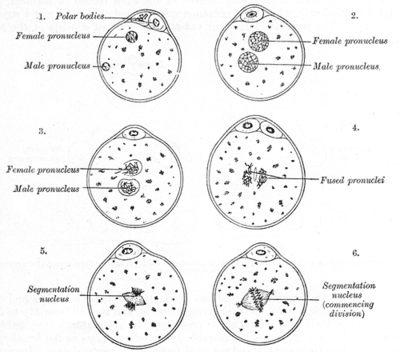
A pronucleus (pl.: pronuclei) denotes the nucleus found in either a sperm or egg cell during the process of fertilization. The sperm cell undergoes a transformation into a pronucleus after entering the egg cell but prior to the fusion of the genetic material of both the sperm and egg. In contrast, the egg cell possesses a pronucleus once it becomes haploid, not upon the arrival of the sperm cell. Haploid cells, such as sperm and egg cells in humans, carry half the number of chromosomes present in somatic cells, with 23 chromosomes compared to the 46 found in somatic cells. It is noteworthy that the male and female pronuclei do not physically merge, although their genetic material does. Instead, their membranes dissolve, eliminating any barriers between the male and female chromosomes, facilitating the combination of their chromosomes into a single diploid nucleus in the resulting embryo, which contains a complete set of 46 chromosomes.
The presence of two pronuclei serves as the initial indication of successful fertilization, often observed around 18 hours after insemination, or intracytoplasmic sperm injection (ICSI) during in vitro fertilization. At this stage, the zygote is termed a two-pronuclear zygote (2PN). Two-pronuclear zygotes transitioning through 1PN or 3PN states tend to yield poorer-quality embryos compared to those maintaining 2PN status throughout development,[1] and this distinction may hold significance in the selection of embryos during in vitro fertilization (IVF) procedures.
- ^ Reichman DE, Jackson KV, Racowsky C (May 2009). "Incidence and development of zygotes exhibiting abnormal pronuclear disposition after identification of two pronuclei at the fertilization check". Fertil. Steril. 94 (3): 965–970. doi:10.1016/j.fertnstert.2009.04.018. PMID 19476942.